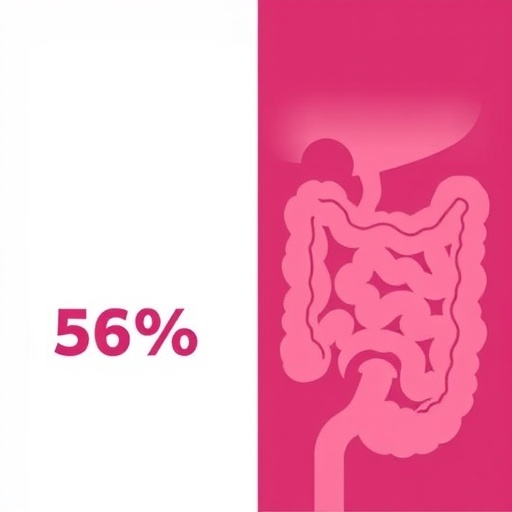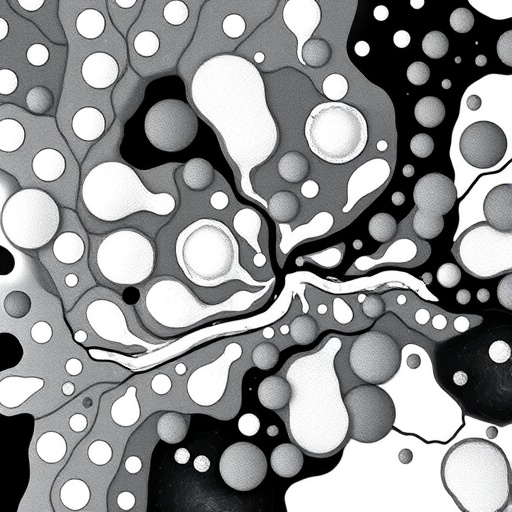
In the rapidly evolving landscape of genetic medicine, CRISPR technology stands as one of the most transformative tools ever developed. Its unparalleled ability to target and rewrite specific sequences within the genome harbors enormous potential to treat a wide array of genetic diseases, from rare inherited disorders to more prevalent conditions such as cancer. Yet, the true therapeutic promise of CRISPR hinges on overcoming a fundamental hurdle: how to efficiently and safely deliver the gene-editing components into the precise cells and tissues where they are needed. Despite extensive advances, finding a delivery method that maximizes gene editing efficiency while minimizing toxicity has remained elusive â until now.
Chemists at Northwestern University have pioneered a novel delivery system that leverages a uniquely engineered nanostructure to carry the complete CRISPR editing payload into target cells with unprecedented efficiency. These structures, known as lipid nanoparticle spherical nucleic acids (LNP-SNAs), represent a significant leap forward. Unlike conventional carriers, LNP-SNAs are encapsulated with a dense shell of DNA, which not only shields the delicate CRISPR components from degradation but also orchestrates the nanostructuresâ journey through the body, selectively guiding them to specific tissues and facilitating their cellular uptake.
At the core of these innovative nanoparticles lies lipid-based material, akin to the lipid nanoparticle (LNP) technology successfully employed in contemporary mRNA COVID-19 vaccines. However, Northwesternâs approach advances beyond the existing paradigm by adorning the surface of the LNP core with a shell of densely packed short DNA strands arrayed in a spherical geometry. This architecture transforms the particles into spherical nucleic acids (SNAs), a form of nucleic acids previously pioneered by the Mirkin laboratory, celebrated for their superior cellular uptake and versatility in targeted delivery.
Experimental studies demonstrated that these LNP-SNAs outperform traditional LNPs dramatically in cellular internalization. Across a broad spectrum of human and animal cell types, the LNP-SNAs entered cells up to three times more efficiently than standard lipid nanoparticles used in vaccine delivery. Such an improvement is profound, addressing a critical bottleneck in gene-editing delivery where historically only a limited fraction of CRISPR machinery manages to escape endosomal entrapment to reach the cell nucleus, the site of genome editing activity.
Moreover, LNP-SNAs exhibit notably reduced cytotoxicity compared to conventional lipid carriers. This diminished toxicity is paramount for clinical applications, as minimizing adverse immune or cellular responses ensures safer therapeutic profiles and expands the potential for repeated dosing, which may be necessary for persistent or systemic genetic conditions. Alongside these benefits, the LNP-SNAs elevate gene-editing efficiency by threefold and improve the fidelity of precise DNA repair mechanisms by over 60%, a critical factor when aiming to correct deleterious mutations without introducing off-target effects.
The key innovation underpinning this success lies in the structure-function relationship inherent in the nanomaterial design. The DNA shell on the nanoparticle surface not only acts as a protective barrier but also engages directly with cellular receptors through sequence-specific interactions. This design enables receptor-mediated endocytosis, a biological mechanism exploited by many viruses for cellular entry, thereby enhancing uptake. Furthermore, the DNA sequences can be engineered modularly, allowing customization of the particleâs tropism towards specific cell types or tissues, such as stem cells, kidney cells, or immune cells, broadening the therapeutic applicability.
This modularity also paves the way for tailoring delivery vehicles to diverse therapeutic contexts, from correcting genetic disorders in hematopoietic stem cells to delivering CRISPR components to solid tumors or neurological tissues. The ability to design and optimize delivery carriers at the nanoscale, focusing not just on chemical composition but on spatial configuration, signals a paradigm shift in nanomedicine. It embodies the essence of “structural nanomedicine,” a burgeoning field emphasizing the impact of nanoparticle shape, size, and surface organization on biological interactions and therapeutic outcomes.
The conception of spherical nucleic acids is itself a groundbreaking innovation, originally developed by Northwestern’s Chad A. Mirkin. SNAs feature nucleic acids arranged radially around a nanoparticle core, offering advantageous properties such as enhanced stability against nucleases, improved cellular uptake, and reduced immunogenicity. The current study integrates this concept with lipid nanoparticle technology to create a hybrid carrier capable of ferrying multiple CRISPR components â including Cas9 enzymes responsible for DNA cleavage, guide RNA molecules dictating targeting specificity, and DNA repair templates facilitating homology-directed repair â all bundled within a single efficient delivery package.
In vitro testing involved exposing a variety of cell types â including human skin cells, white blood cells, bone marrow-derived stem cells, and kidney cells â to these LNP-SNA complexes. Researchers monitored uptake rates, cellular viability, gene-editing efficiency, and precision of DNA repair. Consistently, the nanoparticles achieved superior penetration into cells, were markedly less toxic, and yielded higher gene modification rates compared to existing delivery methods. DNA sequencing data confirmed enhanced rates of precise homologous recombination following CRISPR editing, underscoring potential for clinical gene correction therapies.
Looking forward, the research team plans to extend these findings beyond the laboratory dish into animal models of disease to validate in vivo efficacy and safety. The modular nature of the LNP-SNA platform means that it can be rapidly adapted to carry different gene-editing payloads or target new cell types, making it a highly versatile tool for future genetic medicine applications.
Commercialization efforts are underway through Northwestern spin-out Flashpoint Therapeutics, targeting accelerated translation of this technology into clinical testing. This progression is facilitated by the systemâs ability to enhance delivery efficiency while reducing adverse reactions, addressing two major roadblocks in therapeutic gene editing development.
The promise of CRISPR as a revolutionary medical technology depends critically on the design of its delivery systems. By merging the sophisticated structural features of spherical nucleic acids with the proven LNP core platform, the Northwestern team has crafted a delivery vehicle that pushes the boundaries of what is possible in genome editing. This innovation not only holds promise for curing genetic disorders that were previously untreatable but also represents a leap forward for nanomedicine, affirming the vital role of nanoparticle architecture in therapeutic success.
As CRISPR continues to mature from a molecular tool into a clinical reality, advancements like these underline the intricate interplay between chemistry, nanotechnology, and biology. Efficiently unlocking CRISPRâs full therapeutic potential requires rethinking delivery strategies fundamentally. Northwesternâs LNP-SNA technology exemplifies such reimagining, marking a transformative step toward safer and more effective gene therapies capable of changing the future of medicine.
Subject of Research: Cells
Article Title: A general genome editing strategy using CRISPR lipid nanoparticle spherical nucleic acids
News Publication Date: 5-Sep-2025
Web References:
http://dx.doi.org/10.1073/pnas.2426094122
References:
Mirkin, C. A., et al. âA general genome editing strategy using CRISPR lipid nanoparticle spherical nucleic acids.â Proceedings of the National Academy of Sciences, 2025.
Keywords:
CRISPRs, Gene editing, Nucleic acids, Genetic disorders, Cancer, Cancer treatments, Drug delivery systems, Drug delivery, Nanomedicine
Tags: CRISPR technology breakthroughsDNA nanostructures for CRISPR deliveryengineered nanostructures in medicineenhancing CRISPR gene editing efficiencylipid nanoparticle spherical nucleic acidsNorthwestern University research in geneticsnovel gene therapy advancementsovercoming challenges in CRISPR deliveryreducing toxicity in gene editingsafe gene editing solutionstargeted delivery systems for genetic medicinetherapeutic applications of CRISPR




